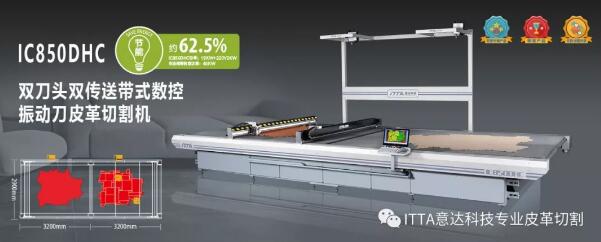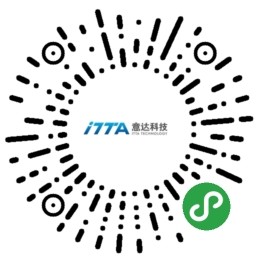The traditional second industry is manufacturing industry, and the third industry is service industry. "Made in China" has developed from OEM to now. We must attach importance to independent research and development, combine industrial manufacturing with industrial services, and realize the integration of the second and third industries. Therefore, it is called "2.5 industry".

Headquarters base to be "Silicon Valley of shoes industry"
Zhang Huarong, chairman of Huajian International Group, creatively put forward the concept of "2.5 industry" in view of various problems in traditional manufacturing, especially in footwear industry.
"The traditional primary industry is agriculture, the secondary industry is manufacturing, and the tertiary industry is service industry. "Made in China" has developed from OEM to now. We must attach importance to independent R & D and combine industrial manufacturing with industrial services. " According to Zhang Huarong, "made in China" has achieved perfect integration of the second and third industries in the process of transformation and upgrading, which we call "2.5 industry".
Wang Zhongming, Deputy Secretary General of the all China Federation of industry and commerce, said that Chinese enterprises are still in the primary stage of "2.5 industry". In fact, "2.5 industry" is the pace of enterprise upgrading in China, which emphasizes both R & D investment and marketing development. The two directions can make the manufacturing industry more connected with the high-end market, and at the same time, strengthen the quality to win.

"What is transformation and upgrading? It's not that you don't make this kind of product, but you turn to another kind of product. Instead, you make this kind of product perfectly. When other people can't surpass it, you can expand it out and set up your own processing factory overseas. This is the transformation and upgrading. In this sense, it is in the same line with "2.5 industry" Said Zheng Li, a professor in the Department of industrial engineering at Tsinghua University.
Zheng Li told the author that in fact, the production-oriented service industry can make the core competitiveness of production itself more focused. "Production seems to be very simple, but in fact, it has become more complicated in the information age. The competition between factories and factories seems to be the competition between two factories, more of a network competition, a competition between manufacturing and production services. For example, an engine is only for rent now, and it will provide a full range of after-sales services later, which goes beyond the original scope of pure production and manufacturing. "
In fact, "2.5 industry" is the integration of production and manufacturing resources in the shortest time in the most efficient, convenient and direct form on a platform. "The industrial chain is very long, including production, manufacturing, financing, insurance, design, marketing, management, information, brand management, property network system, etc. In such a long process, if the industrial chain is very decentralized, the efficiency of integration will be very low, and the cost will be very high. In order to reduce the operation cost of the whole industrial chain and improve the efficiency of the industrial chain, a platform is needed. So that the representatives of each link can find their own position in this platform, and then integrate the shoemaking industry in a very efficient way. This is in line with the current law of enterprise development. " Long Yongtu, member of the Boao Forum for Asia International Advisory Committee and former chief negotiator of the Ministry of foreign trade and economic cooperation of the people's Republic of China, said.

In order to integrate the industrial chain of footwear industry, the world footwear headquarters base came into being. Zhang Hong, deputy general manager of the world footwear headquarters base, said that the world footwear headquarters base is a comprehensive public service platform for the footwear industry. One of its functions is the upgrading and undertaking platform for the world footwear industry to enter China, through which the world's advanced footwear technology can enter China. At the same time, through this platform, China's footwear industry also learns from the world's advanced technology, makes practical transformation and upgrading, improves the innovation ability and comprehensive competitiveness of China's footwear industry and Dongguan, the "world footwear capital", and promotes the healthy development of Dongguan's footwear industry.
It is reported that the world footwear headquarters base project covers a total area of 160000 square meters and a total construction area of 480000 square meters. It is divided into five areas and three phases of development and construction. After completion, it can accommodate 5000 merchants, more than 30000 practitioners and an annual turnover of 60 billion yuan. The first phase of the project integrates industry, business, communication and life. With the upstream and downstream enterprises and businesses of the shoe industry as the center, it constructs a large-scale comprehensive industry service platform social system with multiple composite functions. Through the shoe industry cluster, talent cluster, business finance cluster and information service cluster, it realizes the seamless connection of the whole industrial chain of the shoe industry. Become the center of fashion trend release of finished shoes, the base of new materials and new technology innovation. The settled enterprises and merchants can fully rely on this platform to realize all market transactions, cooperation and exchanges, and have relatively independent development momentum. At the same time, its strong comprehensive service ability can also form regional radiation, even affect the development of the whole industry, and truly play the advantages of Silicon Valley in the shoe industry.
According to long Yongtu, the competition of modern enterprises is not only the competition between enterprises, but also the competition of industrial chain. "If a shoe company can find its own office and representative in the world footwear headquarters base in Dongguan, the integration efficiency and cost of a global footwear industry chain will undergo revolutionary changes. This has a profound impact on the production of the whole shoe industry.
”

Refine local high-end and encourage low-end transfer
In fact, as a typical labor-intensive industry, shoemaking industry is called "migratory bird economy", which always transfers to countries and regions with low labor cost. In the 1960s, the world footwear industry center was in Italy, transferred to Japan and South Korea in the 1970s, transferred to Taiwan in the 1980s, and transferred to the southeast coast of China in the 1990s. In recent years, there has been a trend of order transfer from China to Southeast Asian countries such as Vietnam and Indonesia. At the same time, Africa also shows signs of taking over, attracting some large shoe-making enterprises in China to invest in building factories.
Due to long-term OEM, most of China's shoemaking enterprises have low management level, weak brand building and marketing awareness, weak design and R & D ability, and weak market risk resistance ability. In the environment of internal and external troubles, many shoe enterprises have lost money, transferred and closed down in recent years, which challenges the development of regional industrial clusters. As the "capital of shoe industry", Dongguan Houjie also faces the same challenge.
In the future development, many people in the industry almost have the same view: after the impact of the financial crisis, a large part of Dongguan and Houjie are left behind by the enterprises that produce middle and high-end shoes, "and Dongguan and Houjie pay more and more attention to the status of high-end manufacturing and the function of order receiving and marketing, which has become the trend of transformation", and the shoe enterprises with low unit price have spilled into the market It is located in Southeast Asian countries.

So, is it to transfer other land, or to dig deep into the native land? Xu Furong, chief executive officer of adinese (China) Co., Ltd., said, "the industrial foundation and perfect production chain accumulated in the past decades are the advantages of Dongguan that many regions do not have, which provides Dongguan shoe enterprises with the conditions to make high-end shoes with high added value. Therefore, in the future, the direction of Dongguan shoes industry will focus on design and research and development. " At the same time, he believes that in the future, the distribution of China's shoes industry will be as follows: high-end shoes are mainly concentrated in coastal cities, with high added value enough for enterprises to bear the increase of various costs; low-end shoes are gradually transferred to the mainland, and even the production of low-end shoes may be placed in Southeast Asian countries.
Lin Yifu said at the fifth world footwear forum that China should seize the opportunity to choose the next blue ocean under the new round of world manufacturing transfer trend and international division of labor. As an emerging economy, Africa is more suitable for China's manufacturing in terms of labor force and investment policy environment than Southeast Asian countries that have undertaken part of the world's manufacturing in recent years The enterprise has a longer-term strategic plan.

In the face of difficulties, more experts and scholars suggest that traditional manufacturing industry should learn to be professional and stick to. Zheng Li pointed out that the United States, which has become a powerful industrial country in the world, is characterized by large-scale and low-cost assembly line mode, while Japan, which relies on automobile, home appliances, microelectronics and other industries for rapid economic growth after World War II, pursues lean production mode, with lean production as the goal in production transportation, process system, supply chain system and other links. In the next 20-40 years, if China's manufacturing industry wants to become a real "world factory", it will not only require the manufacturing industry to continue to play an important role in the world.
"Not only the footwear industry, but also other labor-intensive manufacturing industries will usher in an irreversible trend - mechanized, intelligent and lean production and manufacturing." Zheng Li said.
Guo Zhengjin also said that in the period of sharp decline in orders, a significant reduction in costs is the primary task of Qiaohong shoes industry at present. Therefore, Guo Zhengjin introduced the management mode of "lean production" to reduce the waste of raw materials and production costs.
Yida Technology: computer leather cutting machine, channel cutting machine, numerical control leather cutting machine, numerical control cutting machine, Yida leather cutting machine, vibration knife cutting machine, intelligent leather cutting machine, cloud computing typesetting system, cloth cutting machine, intelligent leather scanning





